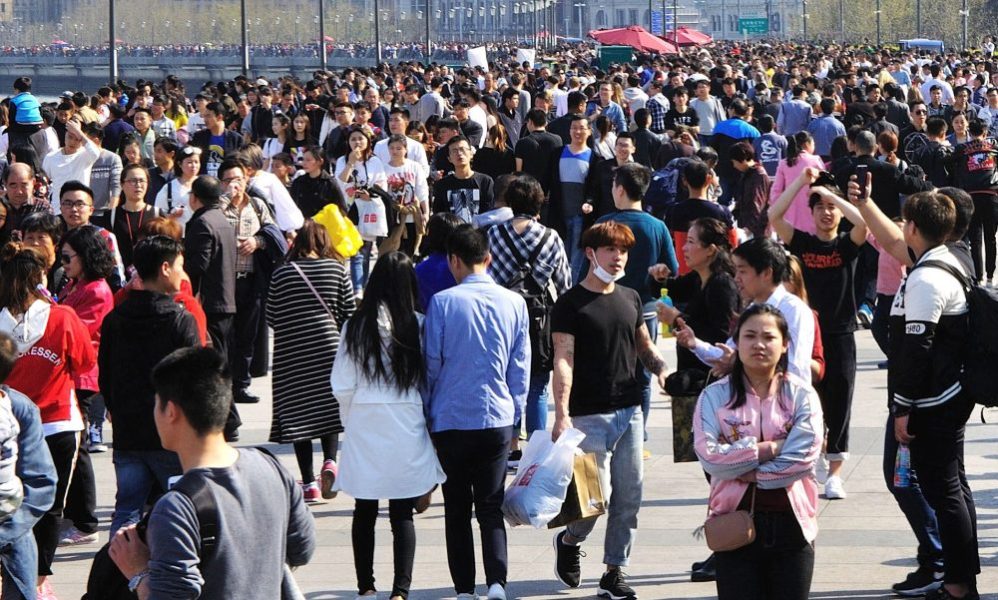By Tosin Deba
China’s population has fallen for the first time in 60 years with the national birth rate hitting a record low – 6.77 births per 1,000 women.
The population in 2022 – 1.4118 billion – fell by 850,000 from 2021.
China’s birth rate has been declining for years, prompting a slew of policies to slow the trend, according to reports.
But seven years after scrapping the one-child policy, it has entered what one official described as an “era of negative population growth”.
The birth rate in 2022 was also down from 7.52 in 2021, according to China’s National Bureau of Statistics, which released the figures on Tuesday.
Deaths also outnumbered births for the first time last year – China logged its highest death rate since 1976 – 7.37 deaths per 1,000 people, up from 7.18 the previous year.
Earlier government data had heralded a demographic crisis, which would in the long run shrink China’s labour force and increase the burden on healthcare and other social security costs.
Results from a once-a-decade census announced in 2021 showed China’s population growing at its slowest pace in decades.
An ageing population and falling birth rates have been slowing down other developed economies in Asia, such as South Korea and Japan.
China’s population trends over the years have been largely shaped by the controversial one-child policy which was introduced in 1979 to slow population growth.
Families that violated the rules were fined and in some cases even lost jobs. In a culture that historically favours boys over girls, the policy had also led to forced abortions and a reportedly skewed gender ratio boys from the 1980s.
The policy was scrapped in 2016 and married couples were allowed to have two children. In recent years, the Chinese government also offered tax breaks and better maternal healthcare, among other incentives, to reverse or at least slow the falling birth rate.
But these policies did not lead to a sustained increase in the births – experts say this is because policies that encouraged childbirth were not accompanied by efforts to ease the burden of childcare, such as more help for working mothers or access to education.
In October 2022, Chinese president Xi Jinping made boosting birth rates a priority. Xi said in a once-in-five-year Communist Party Congress in Beijing that his government will “pursue a proactive national strategy” in response to the country’s ageing population.
Meanwhile, China’s economy grew last year at the second slowest rate in almost half a century – in a sign of how the country’s strict coronavirus regulations have affected businesses.
Official figures show the gross domestic product (GDP) of the world’s second largest economy rose 3% in 2022.
That is way below the government’s target of 5.5% but better than most economists had forecast.
Last month, Beijing abruptly lifted its strict zero-Covid policy.
The policy had a major impact on the country’s economic activities in 2022 but the sudden relaxation of the rules has led to a jump in Covid cases that threatens to also drag on growth in the early part of this year.
Other than at the start of the pandemic in 2020, when full-year GDP expanded by 2.2%, last year’s economic growth was the weakest since 1976, when the founder of the People’s Republic of China Chairman Mao Zedong died.
“The data came in stronger than our expectation. Nevertheless, it reveals the hard hit to the Chinese economy from a zero-Covid policy and a property rout in 2022,” Jacqueline Rong, deputy China economist from the BNP Paribas bank, said.
Experts have voiced caution over China’s economic numbers – with some warning that the trajectory of the data rather than the figures themselves are a useful guide to how the country’s economy is performing.





































Leave a comment